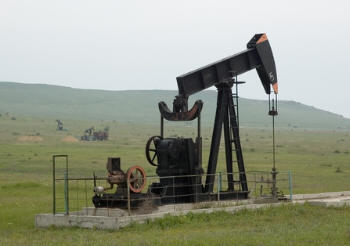By Jonathan G. Dorn

Background
• The United States consumes nearly 21 million barrels of petroleum per
day (7.5 billion barrels per year), one fourth the world total.
• Of the crude oil consumed in the U.S., 66 percent is imported.
• The U.S. is on pace to spend over $500 billion on petroleum imports in
2008.
• U.S. oil production currently occurs onshore in the lower 48 states (2.9
million barrels per day (mbd)), offshore (1.4 mbd, primarily in the Gulf of
Mexico), and in Alaska (0.7 mbd).
More Drilling Cannot Make the U.S. Energy Independent
• The U.S. Geological Survey estimates that 10.4 billion barrels of oil
are technically recoverable in the Arctic National Wildlife Refuge (ANWR)—less
than one and a half years of consumption.
• The U.S. Department of Energy (DOE) estimates that of the 59 billion
barrels of technically recoverable oil in the Outer Continental Shelf (OCS)
of the lower 48 states, only 18 billion are off limits under the federal
moratorium.
• DOE projects that lifting the OCS moratorium would not increase production
before 2017 and that by 2030 production would only amount to 0.2 million
barrels per day—less than 1 percent of current consumption.
• Total U.S. proved oil reserves are estimated at 21 billion barrels—less
than a 3 year supply at the current rate of consumption.
• Since peaking in 1970, U.S. crude oil production has declined 47 percent.
World production could be peaking now.
More Drilling Will Not Reduce Oil or Gasoline Prices
• DOE projects that opening ANWR would lower gasoline prices at the pump
by a mere 2 cents per gallon.
• Lifting the moratoria on drilling in ANWR and the OCS would reduce the
price of a gallon of gasoline by at most 6 cents—and this would not be seen
for at least another decade.
• Oil is traded as a global commodity and its price is set on the world
market. The Organization of Petroleum Exporting Countries (OPEC) could
simply reduce exports to negate even the nominal potential price reduction,
a fact acknowledged by DOE.
We Can Move Beyond Oil
• The increase in U.S. automobile fuel economy standards to 35 miles per
gallon of gasoline mandated by the Energy Independence and Security Act of
2007 is projected to save more than 1.1 million barrels of oil per day in
2020—roughly half of current U.S. imports from the Persian Gulf. Technology
exists to raise standards higher faster.
• Electrifying the U.S. transportation system and restructuring urban
transport could reduce petroleum consumption by over 50 percent, nearly
eliminating the need for imports.
• Wind-generated electricity could power plug-in hybrid cars, such as GM’s
prototype Chevy Volt, at the equivalent of less than $1 per gallon of
gasoline.
# # #
Visit http://www.earthpolicy.org/Bulletins/2008/Bulletin3.htm for full data.
For information on Earth Policy Institute’s plan to restructure transportation systems and move away from oil, see Plan B 3.0: Mobilizing to Save Civilization, available at www.earthpolicy.org for free downloading.
Written by Earth Policy Institute at: http://greenoptions.com